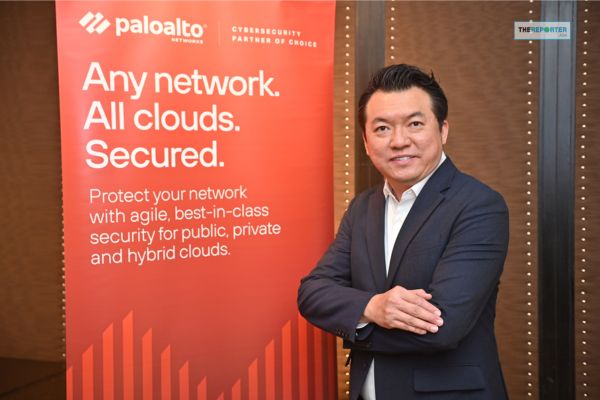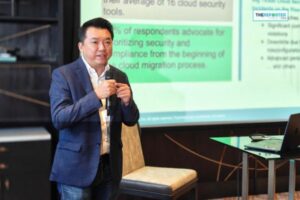Bangkok, Thailand – Palo Alto Networks, a global cybersecurity leader, has revealed the top five cybersecurity threats for 2025, urging Thai organizations to brace themselves for a new era of increasingly sophisticated and dangerous cyberattacks.
- – Kaspersky Highlights Growing Cyber Threats Targeting OT Systems
- – Synology Unveils 4 New Solutions to Combat Rising Ransomware
Piya Jitnimit, Country Manager – Thailand, Palo Alto Networks, emphasized the growing scale and complexity of cyberattacks, stating, “In the past year, we have witnessed a significant rise in cyberattacks, both in terms of volume and sophistication, particularly those leveraging AI technologies like Deepfake to impersonate, deceive, and target organizations.”
Evolving Threat Landscape
Jitnimit highlighted that today’s cyber threats extend beyond data theft and ransomware, encompassing attacks on critical infrastructure that could potentially compromise national security.
“Years ago, a hospital in Germany was hacked, rendering their systems incapable of upgrading and resulting in patient fatalities. This serves as a stark reminder that cyber threats are not distant concerns and can have devastating real-world consequences,” Jitnimit explained.
He further illustrated the severity of ransomware attacks, where attackers encrypt organizational data and demand ransom. Failure to recover this data can lead to business disruption and substantial financial losses.
5 Key Cybersecurity Trends for 2025
1. Unified Cybersecurity Platform: Organizations will increasingly adopt unified platforms to enhance management efficiency and bolster their defense against cyber threats.
- Unified platforms streamline the management of security tools, addressing the current reliance on multiple vendors and mitigating the cybersecurity skills shortage.
- Platform Example: XDR (Extended Detection and Response) consolidates data across networks, devices, and the cloud for swift and effective threat analysis and response.
2. Deepfakes: Deepfake technology will be increasingly weaponized, particularly in social engineering attacks designed for financial fraud.
- Deepfakes generate highly realistic fake images or audio, making them difficult to distinguish from authentic content. Attackers can exploit Deepfakes to create fake videos or audio of key figures like CEOs to deceive employees or customers.
- Example: Falsifying a CEO’s video call to manipulate employees into transferring funds or disclosing sensitive information.
3. Quantum Computing: Quantum-based threats will emerge as a significant risk requiring organizational preparedness.
- Quantum computers possess the capability to decrypt data encrypted using traditional methods, necessitating proactive measures and the development of quantum-resistant security systems.
- Recommendations: Explore and test new encryption methods like Post-Quantum Cryptography to mitigate quantum-related threats.
4. AI Transparency: Organizations must prioritize ethical considerations and transparency in their AI deployments.
- Responsible, transparent, verifiable, and fair AI practices foster trust and mitigate legal risks.
- Organizations should establish clear guidelines and policies for AI usage, disclosing information about AI processes and algorithms.
5. Supply Chain Security: Evaluating and securing the supply chain is crucial for comprehensive cybersecurity.
- Cyber threats originate not only from external sources but also from vulnerabilities within the systems of partners across the supply chain.
- Organizations should conduct risk assessments and establish security standards in collaboration with their supply chain partners.

Palo Alto Networks Highlights AI as a Double-Edged Sword
Jitnimit stressed the potential of AI while acknowledging its risks, stating, “AI can elevate cybersecurity through user behavior analysis, threat detection, and incident response. However, it can also be exploited by cybercriminals. Organizations must be prepared and cultivate a cybersecurity culture.”
Collaboration is Key
Palo Alto Networks is committed to collaborating with both the public and private sectors to cultivate a secure cyber ecosystem.
“We believe collaboration is crucial in addressing cyber threats. We are dedicated to sharing knowledge and expertise, such as conducting training for government and industry personnel, to empower Thai organizations in effectively preparing for and responding to cyber threats,” Jitnimit concluded.
#cybersecurity #deepfake #quantum #AI #transparency #supplychainsecurity #PaloAltoNetworks






